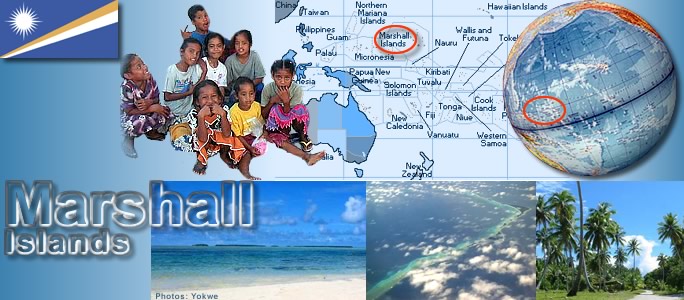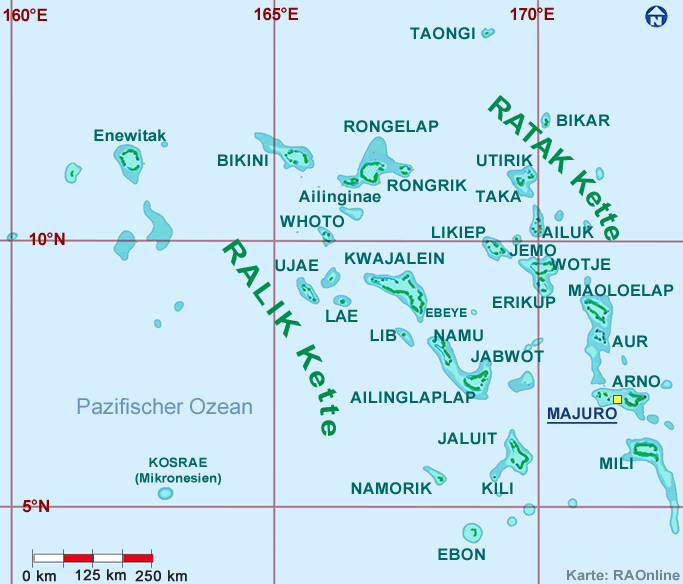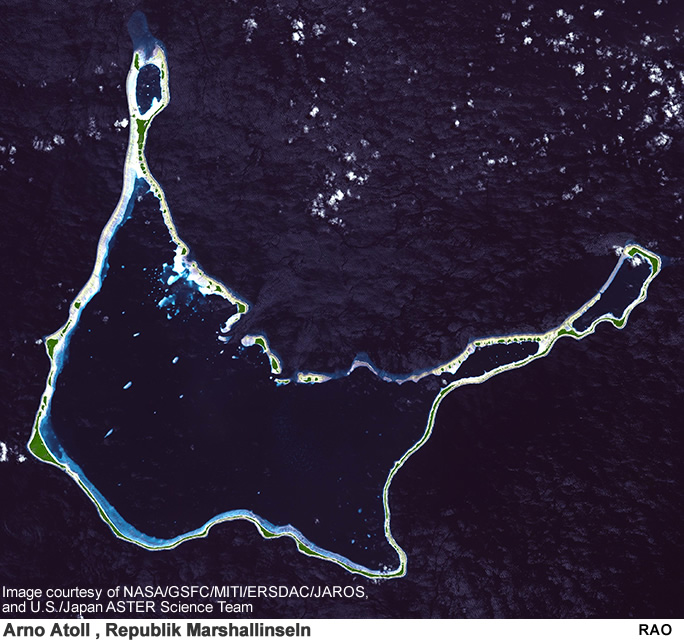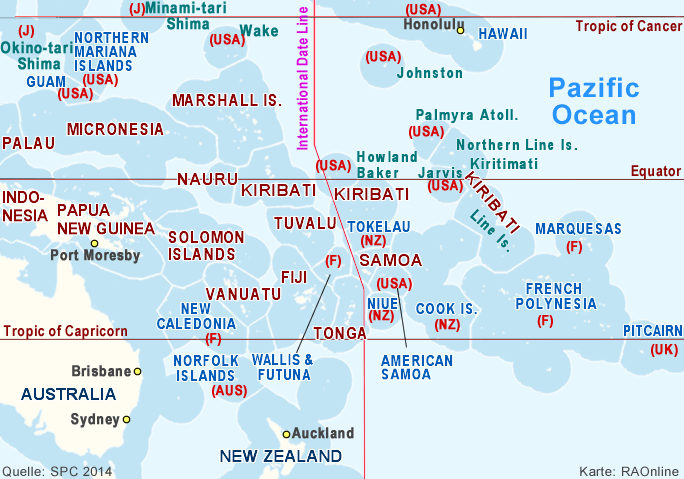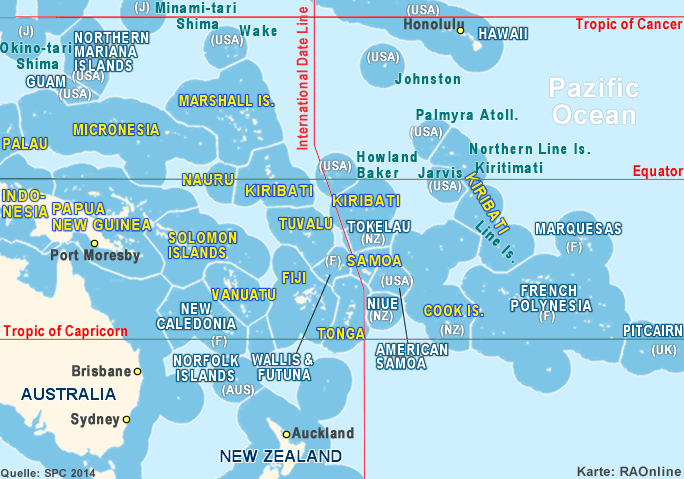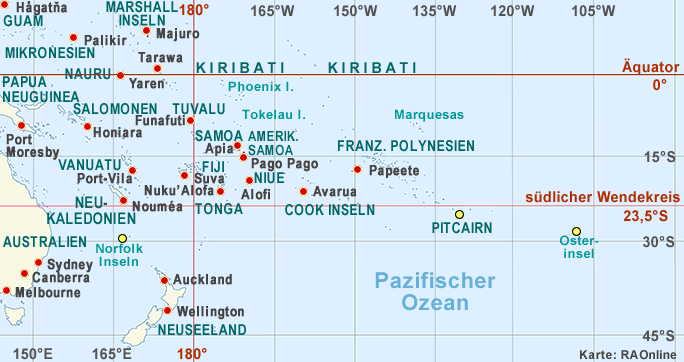 |
Atolle Marshallinseln |
 |
Asien - Ozeanien Informationen |
|
|
Marshall
Islands and Climate change |
 |
New Climate Study visualized Confronting Risk of Projected Sea Lever Rise
Rising sea levels in the atoll nation of Marshall Islands are projected to endanger 40 percent of existing buildings in the capital, Majuro, with 96 percent of the city at risk of frequent flooding induced by climate change, according to a new World Bank study.
 |
Jointly produced by the Government of the Republic of Marshall Islands and the World Bank, Adapting to Rising Sea Levels in Marshall Islands provides alarming visual projections, together with adaptation options to assist the atoll nation in tackling rising sea levels and inundation over the next 100 years.
As COP26 begins in Glasgow, the new visualizations demonstrate the existential threat the Marshall Islands faces from climate change. Should existing sea level rise trends continue, the country will confront a series of increasingly costly adaptation choices to protect essential infrastructure, such as schools, hospitals, and government buildings. |
|
"These new visual models- which collect and connect many layers of data that were never available before- provide Marshall Islanders with detailed insights into the likely impacts of rising sea levels on densely populated parts of the country," said World Bank Senior Municipal Engineer and leader of the study, Artessa Saldivar-Sali.
"These insights are critical for decision-makers to understand the potential short-, medium-and long-term benefits of adaption options, such as sea walls, nature-based solutions and land raising, and how each could mitigate the threat posed by rising sea levels and ultimately protect Marshallese homes, livelihoods and way of life."
By providing a building-by-building breakdown of what various increases in sea levels would mean for the atoll nation, policy makers and the public can see when specific locations- down to schools, clinics, government buildings and individual communities- would become inundated, uninhabitable, and unusable.
Saldivar-Sali said the modelling paints a clear picture of the need for significant investment in adaptation for, and by, atoll nations like Marshall Islands.
"While it is important to show that there are low-cost options that can make meaningful differences immediately, these new visualizations clearly highlight that under extreme scenarios more transformational measures like land reclamation or even migration may become necessary," she said.
Adapting to Rising Sea Levels in Marshall Islands has been released as Marshall Islands' delegation prepares for COP26, with representatives planning to use it to paint a clear picture of what atoll nations are facing, and to encourage other nations to strengthen their Nationally Determined Contributions.
"Our people know the imminent threats posed by rising sea levels, but for others at these major events; the impacts of climate change may be more abstract. With a powerful tool like this, we can help to bridge that understanding,"said Marshall Islands Climate Change Directorate Director, Clarence Samuel.
"It is important that the tool highlights there are still adaptation options open to us, but action must be taken to avoid those last resorts, such as migration," added Mr. Samuel.
Adapting to Rising Sea Levels in Marshall Islands and the related Legal Dimensions of Sea Level Rise report are parts of a wider body of work, funded by the Global Fund for Disaster Reduction and Recovery (GFDRR), to provide at-risk atoll island nations with evidence of the scale of the threat posed by climate change, together with clear indications of what decisions and investments could be made to protect their homes, livelihoods and way of life.
The World Bank works in partnership with 12 countries across the Pacific supporting 87 projects totaling US$2.09 billion in commitments in sectors like agriculture, health, education and employment, climate resilience and adaptation, energy, fisheries, rural development, economic policy, macroeconomic management, aviation and transport, telecommunications and tourism.
nach
oben
World Bank to Support Disaster Protection for Marshall Islands' Urban Communities
New US$30 million project will improve climate resilience and safety of densely populated urban areas in the country
The World Bank's Board of Executive Directors has approved a new project to strengthen the climate resilience, safety, and livability of urban areas of the Marshall Islands. .
The US$30 million Republic of the Marshall Islands Urban Resilience Project includes support for more climate resilient public facilities and urban spaces, and assistance for climate adaptation planning and policies. The project also includes the construction of coastal protection including sea walls, dikes and embankments, to protect important infrastructure in the capital, Majuro.
Marshall Islands' urban centers are some of the most densely populated areas in the Pacific, and internal migration from outer islands has only intensified over the past 30 years.
This rapid urbanization and growth exacerbate risks to climate change and natural hazards and requires more risk-informed urban planning and regulations. This is a particularly serious concern in the low.lying atoll nation that is already highly vulnerable to climate change impacts such as sea level rise, tropical storms, typhoons, and prolonged droughts.
"As people continue to move to our country's urban centers, there is increasing pressure on our efforts to ensure there is appropriate housing, urban infrastructure and services," said Hon. Jiba Kabua, Minister of Works, Infrastructure and Utilities. "We recognize the need to address these planning issues by improving urban resilience at the building, neighborhood and island levels, and welcome this new World Bank support to address these serious risks to urban communities."
The project will invest in more resilient and sustainable public facilities to act as demonstration projects for future developments. This will include the construction of more climate resilient government buildings in Majuro which will play an important role in supporting government services during natural disasters.
"We are pleased to be supporting the Government of the Marshall Islands through this new project that will also provide analysis of current and future climate related risks to people, housing and infrastructure," said Degi Young, the World Bank's Resident Representative for the Marshall Islands, the Federated States of Micronesia, and Palau. "We are also proud that this builds on the World Bank's climate adaptation support for the country through existing projects including the Pacific Resilience Project and our work on mapping the impacts of sea level rise and adaptation options for Marshall Islands through our recent Atoll Study."
Throughout the urban planning improvements and coastal resilience measures to improve protection from storm surges and sea level rise, the project will maintain a focus on outreach and consultation with communities.
"When making local level improvements to land planning, the strong participation of local communities, landowners, public authorities and the private sector is vital," said Degi Young. "We have worked with the government to ensure consultation is front and center in this work, which will ultimately improve the quality and safety of urban communities."
nach
oben
| RAOnline: Weitere Informationen über Länder |
|
Links
|
 |
 |
 |
External Links |
|

